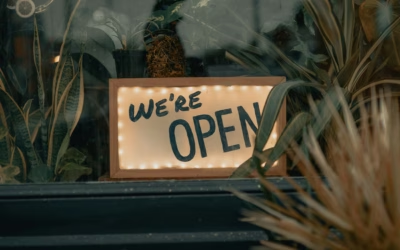Ready to begin your studio journey?
Launch your studio with a free trial of OfferingTree and start your journey off right. Build your website, offer classes, take payments, and so much more!
Teaching yoga classes where students have varying abilities, experience levels, and physical needs can feel overwhelming. How do you serve a student practicing in a chair alongside someone flowing through advanced poses? The secret lies in understanding that mixed-level teaching isn’t about making everyone do the same thing—it’s about creating a unified practice where everyone belongs.
Why Mixed-Level Classes Matter
Traditional yoga studio models often separate students by perceived “levels”—beginner, intermediate, advanced. But this approach has significant drawbacks. It assumes that physical ability equals yoga advancement, reinforcing what accessibility advocate Jivana Heyman calls “ableism in yoga”—the belief that there’s one superior way to be in a body.
The reality is that yoga is fundamentally a spiritual practice. An experienced practitioner recovering from injury, an elderly student with decades of wisdom, or someone with a disability brings just as much “advancement” to the mat as someone who can perform complex poses.
Mixed-level classes create space for the true diversity that exists in our communities. They allow families to practice together, accommodate students as their bodies change over time, and challenge the hierarchical thinking that can permeate yoga spaces.
The Foundation: Creating a Culture of Acceptance
Before diving into techniques, consider the subtle messages you’re sending as a teacher. Students pick up on your beliefs about yoga through your language, demonstration choices, and the way you respond to different variations.
Ask yourself: What is yoga to you? If your definition centers on physical achievement rather than connection, breath, or coming home to yourself, students will feel that energy. They’ll compete, compare, and judge themselves—exactly the opposite of yoga’s intended purpose.
Creating an accepting environment means:
- Celebrating all variations equally
- Using language that emphasizes inner experience over external appearance
- Recognizing that students’ entire presence in class (how they treat others, their willingness to listen to their bodies) is part of their practice
- Avoiding subtle hierarchies that suggest more challenging equals better
The Core Technique: Prepare Separately, Practice Together
The most effective strategy for mixed-level teaching follows this principle: give different setup instructions but find moments for unified practice.
Instead of teaching sequentially (“Now if you’re on the mat, do this… and if you’re in a chair, do that”), integrate the experience:
Separate Preparation:
- “For Cobra pose on the mat: lie on your belly with hands under shoulders, forehead down”
- “In the chair: place a bolster on your lap, lean forward with hands on the bolster, head down”
Unified Practice:
- “Together, everyone: exhale and ground down, inhale to slowly lengthen your spine and lift your head, neck, and chest”
This approach requires advance planning. You need to think through variations beforehand and practice giving instructions for multiple setups simultaneously. It’s like patting your head while rubbing your stomach—challenging but achievable with preparation.

Practical Teaching Strategies
Use Internal Orientation
Replace external directions with body-based cues:
- Instead of “reach toward the ceiling” → “extend your arms overhead”
- Instead of “place hands on the floor” → “ground through your hands”
- Instead of “face the front wall” → “lengthen through your spine”
This language works regardless of whether someone is standing, sitting, or lying down.
Demonstrate Thoughtfully
Students naturally copy what they see. If you consistently demonstrate the most advanced variation, you’re sending a message about what’s “correct” or desirable. Instead:
- Demonstrate the gentler version when offering multiple options
- Stay in a chair when teaching chair/mat integration
- Show that you value all variations equally through your modeling
Manage Flows Mindfully
Flowing sequences present additional challenges since there’s less time for separate preparation. Consider these modifications:
- Slow down your flow to allow pauses at each pose
- Teach the same sequence at different intensities, inviting students to stay with their accessible version
- Focus on similar leg positions while varying arm and torso movements
Handle Props Neutrally
Props aren’t “easier” options—they’re tools. A block can make Tree Pose more accessible for one student while making it more challenging for another by changing their balance requirements. Present props as neutral choices that serve different bodies differently.

Addressing Common Concerns
“Won’t students feel judged?” This depends entirely on the culture you create. In welcoming spaces where teachers emphasize yoga’s spiritual aspects and celebrate diversity, students practicing differently feel included. In competitive environments focused on physical achievement, differences feel like failures.
“What if someone needs a prop but won’t use it?” Students often avoid props due to misunderstanding their purpose. Address this by:
- Having everyone try the prop version first
- Demonstrating props yourself
- Explaining how props serve different bodies differently
- Creating classes where props are normal, not special accommodations
“How do I manage all these variations?” Start small. Practice with one or two variations before adding complexity. Consider bringing assistant teachers for larger groups. Remember that you don’t have to serve everyone perfectly—sometimes the best you can do is create breathing space together after giving different instructions.
The Bigger Picture: Accessibility and Inclusion
Teaching mixed-level classes is really about making yoga accessible to real human bodies and lives. Bodies change due to injury, illness, aging, and countless other factors. A practice that only works when we’re young, flexible, and pain-free isn’t sustainable.
When you create space for diversity in your classes, you’re not just accommodating different abilities—you’re modeling yoga’s deeper teachings about unity in diversity. You’re showing students that their worth isn’t tied to their physical performance and that yoga remains available to them throughout all of life’s changes.
Getting Started
If you’re new to mixed-level teaching:
- Start with your mindset. Examine your own beliefs about what makes someone “good at yoga”
- Practice variations yourself. Try poses both on the mat and in a chair to understand the differences
- Begin with static poses. Master the “prepare separately, practice together” technique before attempting flows
- Use clear, body-based language. Record yourself teaching to notice external directional cues
- Create community. Emphasize that how students treat each other is part of their practice
Supporting Your Mixed-Level Teaching
Running a successful mixed-level program requires the right tools and systems. OfferingTree’s class management features help you communicate class accessibility clearly, manage varied pricing for different student needs, and maintain the detailed student notes that make personalized instruction possible.
Whether you’re scheduling chair yoga sessions alongside mat classes or creating truly integrated experiences, having systems that support your teaching vision makes all the difference.
Teaching mixed-level classes isn’t just about technique—it’s about embodying yoga’s deeper promise that everyone belongs. When you create space for real diversity in your classes, you’re not just teaching poses. You’re modeling what an inclusive spiritual community can look like.
Want to deepen your understanding of accessible yoga? Check out more resources from Accessible Yoga and consider how your class management platform can support your inclusive teaching goals.




